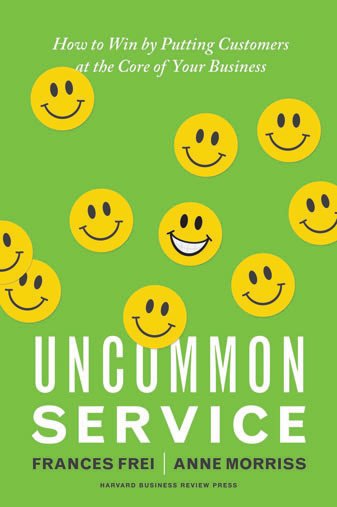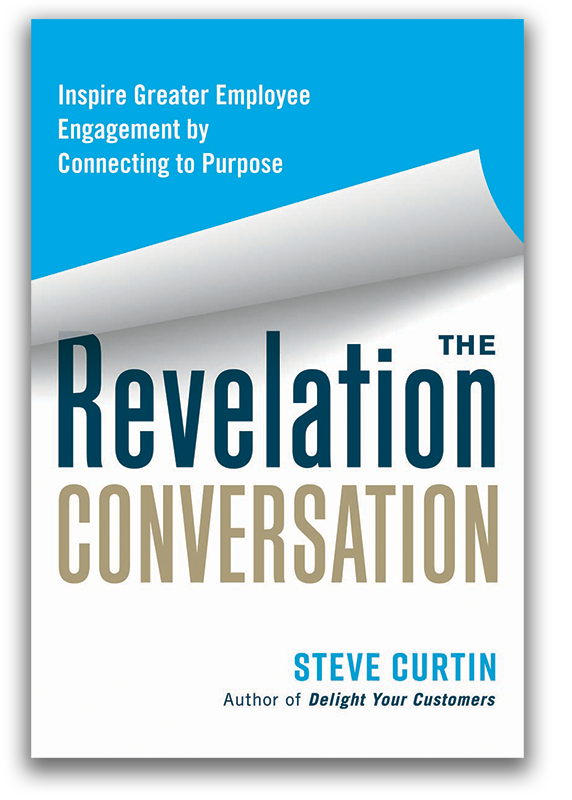 I read a lot of business books—many of which pertain to customer service. When so many customer service books offer readers the equivalent of a simplistic 5-step approach to improving customer service that produces the acronym: S.M.I.L.E., Uncommon Service is a refreshing change.
I read a lot of business books—many of which pertain to customer service. When so many customer service books offer readers the equivalent of a simplistic 5-step approach to improving customer service that produces the acronym: S.M.I.L.E., Uncommon Service is a refreshing change.
Rather than patronizing readers with predictable stories about surly waiters and rude flight attendants and repeating overused customer service platitudes such as “The customer is always right,” authors Frances Frei and Anne Morriss offer practical advice supported by dozens of contemporary and relevant illustrations and case studies.
After reading the book, I posed several questions to co-author, Anne Morriss:
1.) In your opinion, why is “uncommon” service so uncommon?
“In our work, we use a very specific definition of service excellence: being great at the things your customers value most. Excellence is rare because the path to getting there is not intuitive. It’s not about trying harder or deciding that the customer is always right. It requires, among other things, being deliberately and strategically ‘bad’ at certain things. That’s an emotional barrier that’s often hard for Type A managers to get over.”
2.) If you managed a new group of people tomorrow, what is the first action you would take in order to inspire them to deliver “uncommon” customer service?
“One our favorite reviewers said that the first thing he was going to do after reading the book was to apologize to his employees. It’s not a bad place to start. The cost of trying to be great at everything is exhausted mediocrity, and it’s a price the front line disproportionately pays.
But I like your question’s focus on action because it’s your actions that of course will get your team’s attention. The first step we would take is to visit the front lines and talk frankly with your employees about the barriers to service excellence. Ask your people to think about the last few times they haven’t been able to deliver the level of service they wanted. What was getting in their way? The goal here is to identify systematic failure, so take it as a given that your individual employees are not the problem.”
3.) How do you motivate employees to deliver uncommon service when demand is high and there is seemingly always another customer lining up to buy?
“First, you have to convince yourself – really convince yourself – that it’s not about employee attitudes or motivation. That’s not what’s getting in the way of delivering great service, and it’s not the solution to it. The solution is to design a service model and service culture that allow average employees to deliver excellence as an everyday routine. The goal is to set people up to excel ‘casually.’
One very common barrier to great service is that companies design jobs for ‘service heroes,’ with too much complexity and chaos for a normal human being to do well. The right place for many service organizations to start is to redesign customer-facing jobs so that your people have a better chance of taking care of your customers. Reduce the complexity that the front line has to manage. Both customers and employees will be happier.”
4.) How do you motivate a customer-facing employee to deliver uncommon service in a low-wage, high-turnover job?
“You design the job so that excellence is the only reliable outcome. One fast-food restaurant we studied was using fifty-five different ways to ring up the same drink. This happened over time, and for understandable reasons, but it meant that there was very little space left over in any given service interaction to address the needs of the person on the other side of the counter.”
5.) In your book, you address the frequently-asked question, “Where should I begin (to improve the quality of customer service offered)?” by advising readers to “believe in an alternate reality, where ordinary people create extraordinary value…” Given this, how would you respond to an ordinary frontline employee who’s motivated to provide “uncommon” service but his enthusiasm/improvement suggestions are dismissed/ignored by superiors who are more interested in today’s financial results (and conducting business as usual)?
“I would say that if the people at the top don’t share your commitment to service, then you should start looking for another job. In our experience, however, lack of service commitment and callous management are not typically the problems. The problems are usually bad design and a broken service culture, often in a context of very good management intentions. But good intentions aren’t enough to succeed in service. Sometimes – like when you’re trying to hit it out of the park on all service dimensions – they’re actually the things standing in your way.”
Bottom line: The conclusions drawn and the suggestions offered in Uncommon Service will benefit any business leader who serves a customer. If that’s you, then you’re at a disadvantage until you read this book.

